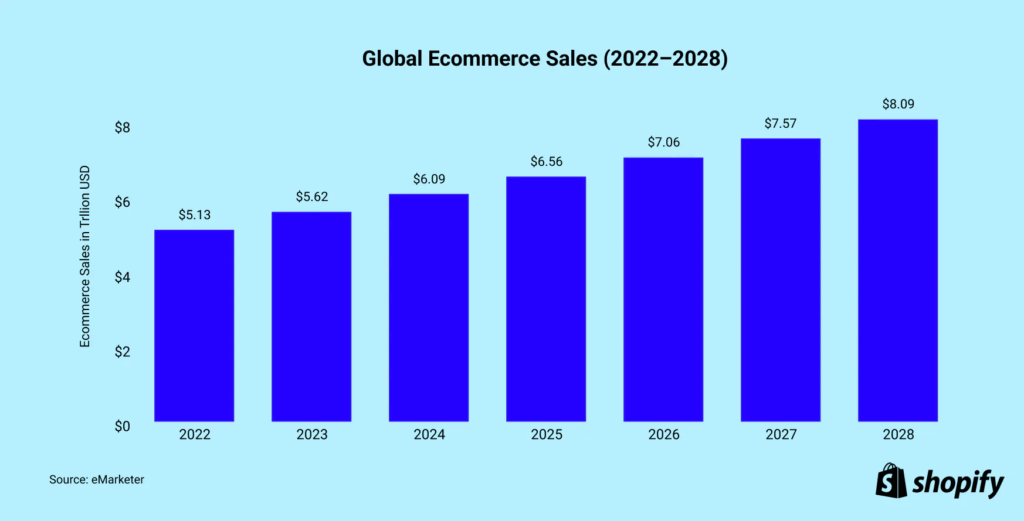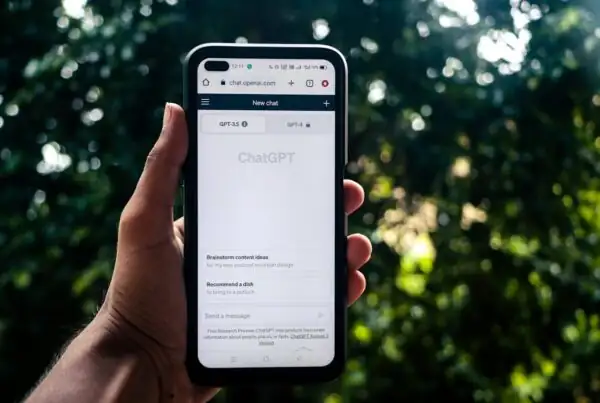In a world where social commerce and online shopping are transforming the retail sector, “speaking the language” is just the beginning. Brands that thrive at scale are those that adapt to each market, personalising their messaging, creative, user experience, and purchase flows to create authentic interactions. The result is not just understanding, but a genuine emotional connection that increases trust, conversions, and long-term customer lifetime value.
This article compiles insights from our international SEO, international advertising and international social media teams to explore why localisation is more important than ever, how it relates to global e-commerce marketing and social shopping strategy, and what practical steps digital teams should integrate into their international programs.
Why localisation matters: the data that proves it
Language and cultural fit still govern whether people trust and buy from a brand. Large-scale consumer research shows a clear majority prefer buying in their native tongue, and many will refuse to purchase from English-only sites. In one survey of 8,709 consumers across 29 countries, 76% said they prefer to buy products with information in their native language, and 40% said they will never buy from websites in other languages.
At the same time, the market opportunity tied to getting localisation right is massive. Global ecommerce continues to grow rapidly: Shopify‘s recent forecasts place global ecommerce sales in the multi-trillion dollar range (estimates vary by source, with projections for 2028 to reach $7.8 Trillions), and mobile commerce continues to drive an increasing share of visits and purchases. That growth amplifies the payoff for effective localisation.
Finally, the rise of social commerce, shoppable posts, livestreaming and in-app checkout, means cultural resonance must extend into social formats and creator partnerships. Estimates put global social commerce sales in the hundreds of billions, with year-on-year growth still strong as platforms deepen commerce features.
Translation ≠ Localisation: what the difference looks like in practice
Translation: accurate words from A → B.
Localisation: a market-ready experience that includes language, imagery, offer structure, UX, legal/regulatory adaptations, payment options, and the social signals that prove trust.
Examples of localisation beyond copy:
- Visuals: models, colours, and scenarios that reflect local norms.
- Payment & pricing: local currencies, popular payment methods, and localised promotions/tax presentation.
- Platform fit: repurposing creative for local social platforms (e.g., Reels vs. WeChat vs. Line).
- Commerce mechanics: local return policies, delivery promises and trust signals (local certifications, payment badges, local reviews).
- Creator match: influencers who command cultural relevance in-market, not just global reach.
These adjustments are what convert awareness into consideration and consideration into purchase, and the data shows they materially impact conversion and retention when executed well.
Localisation and your global ecommerce marketing funnel
To make localisation operational in global ecommerce marketing, treat it as a funnel discipline:
Awareness (top-funnel):
At the awareness stage, localisation starts with platform selection and creative adaptation. Audiences across the globe discover brands in different digital spaces, and what performs in one region may underperform elsewhere.
A data-driven approach allows brands to prioritise the platforms that match local discovery behaviours and tailor creatives accordingly:
- Short-form videos resonate in Asia-Pacific and Latin America, where mobile-first audiences value visual storytelling.
- Carousel and static imagery perform better in markets where visual comparison and informational cues drive decision-making
- Livestream commerce is essential in China, where nearly 45% of internet users made a livestream purchase in 2024 (Statista, 2024).

Choosing the right format, tone, and platform mix ensures that ad spend drives relevant reach, not just impressions. AccuraCast’s own client data shows that campaigns localised for regional social habits can reduce cost-per-click by up to 30% compared with standardised global creatives.
Consideration (mid-funnel):
When consumers move from discovery to evaluation, trust and familiarity become the key drivers of engagement. Localising product content and social proof is crucial to reducing hesitation and creating a sense of connection.
That trust extends beyond copy, it includes reviews, testimonials, and FAQs that reflect the expectations of local consumers.
Ways to localise the consideration stage:
- Translate and adapt FAQs to address region-specific concerns (delivery times, payment methods, warranties).
- Highlight local customer stories or case studies to validate relevance.
- Incorporate regional influencers or creators who speak the local language and embody cultural authenticity.
- Ensure product specifications use local measurement systems (e.g., metric vs. imperial).
This stage is where consumers decide whether your brand “feels like theirs.” When that emotional bridge is built through localisation, engagement and conversion rates increase significantly.
Conversion (bottom-funnel):
Even when awareness and consideration are strong, conversion rates often drop if the checkout experience isn’t localised. In global ecommerce, friction at this stage can have a measurable cost.
According to Emarketer and Statista, the average cart abandonment rate worldwide is around 70%, with 18% of users abandoning purchases because the checkout process was too complicated. Common issues include unavailable local payment options, unclear pricing in foreign currencies, or unfamiliar form layouts (e.g., U.S.-style address fields used in Europe).
To localise for conversion:
- Offer local currency display and regional payment methods (e.g., Mercado Pago in Argentina or Paytm in India).
- Simplify address and phone fields based on regional formatting standards.
- Display clear tax and shipping information to avoid hidden-cost surprises.
- Include localised return policies that align with consumer protection norms.
Even small UX mismatches, like date formatting (MM/DD vs. DD/MM), can subtly erode trust. Testing regional checkout flows helps identify and fix these friction points, resulting in measurable conversion uplift.
Search localisation: Optimising for local intent
While content localisation focuses on adapting messages and visuals, effective localisation also extends to how people search. The keywords, phrasing, and intent behind searches vary greatly by market, even between countries that share the same language.
For instance, a UK user might search for “car insurance quote,” while someone in the US types “auto insurance rates.” Translating keywords directly often leads to poor alignment with local search habits, wasted ad spend, and missed opportunities for organic visibility.
Conducting localised keyword research ensures that both SEO and PPC campaigns reflect real user behaviour in each region. Tools like Google Keyword Planner, SEMrush, or Ahrefs can surface regional search volumes and variations, helping marketers tailor ad copy, meta tags, and landing pages to local preferences.
Read our article about 6 multilingual PPC keyword research must-haves.
Equally important is localising ad extensions and site links, which can improve Quality Scores and click-through rates by signalling regional relevance. E-commerce advertisers need to pay specific attention to Performance Max, and Shopping search campaigns. Learn how to develop a multilingual Google Shopping & Performance Max strategy.
For SEO, localisation starts at the domain level – whether you invest in individual country-code domains or use one international domain with language specific sub-domains or country-specific directories. Learn about international SEO domain structure best practices. Aligning content with local search terms helps pages rank higher and appear more trustworthy to local audiences, especially when combined with region-specific backlinks and structured data.
In short, search localisation bridges the gap between language and intent, ensuring that your brand shows up where — and how — local audiences are looking for your products or services.
Localised social shopping strategy: three practical playbooks
As social shopping strategy becomes core to ecommerce growth, brands must design social-first localisation:
- Creator-led localisation: recruit local creators for regional launches. Creators translate not only language but behavior, they know the platform conventions, humour and disclosure norms that make content perform.
- Format-first creative library: build modular assets that can be remixed for market-specific narratives, e.g., a hero product video split into local-language voiceovers, localised captions, and alternative endings showcasing local use-cases.
- Commerce-native testing: run market-specific A/B tests on shoppable tags, in-app checkout vs. link-out flows, and promo mechanics (flash sales vs. bundled offers) to learn which mechanics convert best locally.
Measure everything by region. “Engagement” in one market might mean shares and livestream comments; in another, it might mean saves and DMs that later convert. Set KPIs that reflect local behavior, not imposed global templates.
How brands should operationalise localisation
Localisation is cross-functional: marketing, product, legal, payments, CX and analytics all play a role. To scale localisation without exploding complexity:
Create a localisation playbook: standardised guidelines for tone, imagery, legal requirements and performance benchmarks.
- Use a centralised CMS with localisation capabilities: let markets pull approved templates and translate versions without breaking brand consistency.
- Invest in local measurement slices: track CTR, conversion rate and AOV by language/market and by social platform. Local wins should be codified and scaled.
- Partner with local experts: native copywriters, cultural consultants and micro-creators will spot risks and opportunities central teams miss.
- Automate where it helps, humanise where it matters: machine translation plus human post-editing is efficient for bulk content; high-impact creative and offers should be human-led.
At AccuraCast we combine global performance frameworks with local market research and creator networks so clients can maintain brand integrity while unlocking regional relevance, a practical approach to turning translation into measurable engagement.
Closing: localisation as strategic advantage
The evidence is clear: customers prefer local-language experiences, social commerce is booming, and conversion depends on cultural fit as much as on UX. Brands that treat localisation as a strategic, measurable discipline, not a checkbox, will capture disproportionate share of the fast-growing global ecommerce and social commerce opportunity.
If your international programs still treat localisation as “translate and go,” it’s time to redesign for market-level resonance: better creative, local creators, adapted commerce flows and measurement that respects cultural differences. That’s where translation becomes true engagement.
Marketing teams today need to deliver higher performance with lower budgets, creating capacity issues that often result in missed localisation opportunities. You can increase capacity and output by partnering with an international SEO agency for continued growth in organic search traffic and AI search presence, an international advertising agency for brand awareness and lead or sales generation in your target markets, and an international social media marketing agency to engage your prospects and customers.
About the Author
Ruben is a digital marketing consultant at AccuraCast, in charge of developing and executing effective digital marketing strategies. His specialities include digital strategy, paid media and programmatic for financial services brands.













